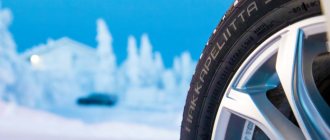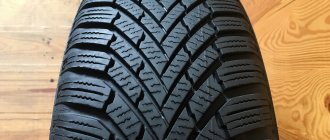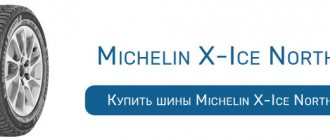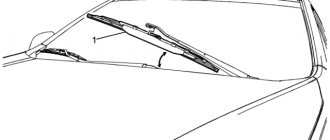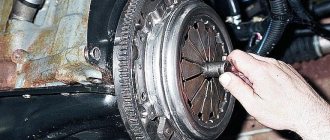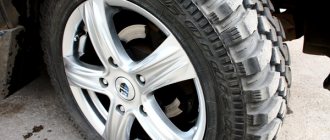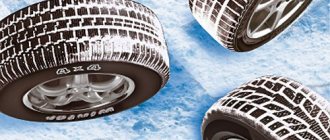Note to the driver: what is important in a good tire?
Any car owner, when choosing a new one for his car, should keep in mind a couple of signs that distinguish a good tire from a useless one. We will also build on them in our analysis. Here they are:
- how the car handles;
- safety;
- fuel economy;
- noise and vibration.
These signs are very important, especially on Russian roads, many of which are in poor condition (if there is an asphalt surface there at all).
To determine which tires are better, we will rely on recent tests of winter and summer tires for 2019-2020 from leading European and Russian experts.
Rivals – who is who?
Cordiant and Viatti are both the most famous Russian brands in the mid-price segment and two bitter rivals for the attention of domestic buyers.
Cordiant is based in Moscow and produces hundreds of models of tires for cars and trucks every year. The company is present not only within Russia, but also exports its eight million products to more than 50 countries around the world. According to the results of an independent audit, the brand turned out to be the leader of the Russian market. The company's tires provide strong grip on the road and a comfortable and safe ride in any weather.
Viatti is assembled at the Nizhnekamskshina plant in Tatarstan using German technology and German equipment. They produce many well-known brands, including the famous Kama. The manufacturer claims that the tires are fully adapted to the realities of Russian roads and meet European quality standards. The company's product is able to give the car owner a comfortable and safe trip in any conditions and for little money.
Rating of the best winter non-studded tires Viatti
Viatti studless tires are ideal for the Russian climate.
This is not a publicity stunt, but a generalization of reviews from the owners of these tires.
It remains soft, does not stiffen at temperatures below minus thirty degrees, and provides good grip on any road surface: snowy roads, dry or wet asphalt, ice.
Viatti Brina V-521
Description of the tire. Such rubber with an asymmetrical directional tread pattern can be installed on passenger cars of any class.
The presence of a wide network of channels for removing water and slush from under the contact patch allows the vehicle to confidently move along flooded sections of the track.
A large number of lamellas on the surface of the checkers maintains their elasticity.
They also improve contact with the road surface due to the upper edges of the spiral-shaped miniature slots of rubber material gripping the road.
Proprietary VRF technology allows you to change the stiffness of the sides, adapting to road conditions.
This increases the service life of the rubber and prevents the formation of punctures and hernias.
According to tire manufacturers, tires retain their performance properties over a wide temperature range: from +10 to -45°C.
Index range. Model speed index: Q, R, T (160, 170, 190 km/h), load index: 82 – 109 (475 – 1030 kg per tire).
Dimension. The tires are suitable for wheels of 14, 15, 17 diameters with a tread width of 175 - 255 mm, side height of 40 - 80%, depending on the size.
Pros of Viatti Brina V-521
- Affordable price.
- Minimal noise.
- The sidewall is not afraid of impacts.
- Excellent handling on roads with different surfaces.
- Balancing without problems.
Cons of Viatti Brina V-521
- Too soft.
- Lack of confidence on the ice.
Viatti Bosco S/T V-526
Description of the tire. Friction tires of this model from a Russian manufacturer are installed on crossovers and SUVs.
The tread has an asymmetrical non-directional pattern that improves traction.
The tread blocks are equipped with a large number of lamellas made in the form of sinusoids.
They also improve the tire's grip on ice and asphalt.
Transverse wide grooves serve to drain water.
Placed on the shoulder areas, they extend to the sides, which improves the vehicle's maneuverability on snowy roads.
During the production of the model, a reinforced belt was used, which allows the tire to withstand heavy loads.
Index range. Speed index: T, H (210, 240 km/h), load index: 94, 116 (670 – 1250 kg).
Dimension. Tires are placed on rims of 15, 16, 17, 18 inches. Profile width: 205 – 285 mm, height: 55 – 75%.
Pros of Viatti Bosco S/T V-526
- Excellent quality rubber material.
- Holds the road perfectly.
- Quiet tires.
- Good cross-country ability in snow.
Cons of Viatti Bosco S/T V-526
- Uncertain behavior in slushy snow.
- The tread pattern quickly becomes clogged with snow.
Turns on the asphalt
Handling in the warm season is assessed by how well the wheels respond to steering wheel turns on dry and wet surfaces, how quickly they brake and start from a standstill. We will compare Cordiant Comfort 2 and Viatti Strada Asimmetrico v 130 in the indicators provided by the Za Rulem magazine test in 2019.
It is interesting that both models passed nose-to-nose steep turns: 48 points on a wet track and 36 points on a dry track - the same indicators for both the Cordiant and the Viatti Asimmetrico v 130. This is a draw.
The braking distance on a wet highway is shorter for the Cordiant - 27.4 m versus 28.9 m for the Strada Asimmetrico. On dry ground the situation is the same - 41.7 m and 44.1 m.
The “rearrangement” test on wet surfaces is still dominated by the participant from Moscow with a top speed of 69.0 km/h. Asimmetrico is behind him with a result of 67.3 km/h. The dry test did not change the situation in any way: the Tatar still loses with an indicator of 71.1 km/h versus 73.9 km/h.
In terms of directional stability, the Muscovite immediately takes the lead and shows a result of 35 points. Strada Asimmetrico earned a modest 30.
Where the Viatti clearly wins is in climbing dirt roads - it climbs the obstacle with a score of 6.5 points, when its rival was left with 5 points.
Based on the results of these annual tests, we can say that the clear favorite when it comes to handling in warm conditions is the Cordiant Comfort 2. It is better than the Viatti Asimmetrico v 130 in almost everything, excluding climbing hills on a dirt road, but this is a minor advantage.
| Summer tires | ||
Cordiant | Viatti | |
| Directional stability, point | 35,0 | 30,0 |
| Ascent along a dirt road, point | 5,0 | 6,5 |
Wet road | ||
| Controllability during an emergency maneuver, score | 48,0 | 48,0 |
| Braking distance, m | 27,4 | 28,9 |
| Rearrangement, km/h | 69,0 | 67,3 |
dry road | ||
| Controllability during an emergency maneuver, score | 36,0 | 36,0 |
| Braking distance, m | 41,7 | 44,1 |
| Rearrangement, km/h | 73,9 | 71,1 |
Cold check
In recent years, tires of the Viatti and Cordiant brands have not overlapped in any test, so it will not be possible to make a comparison similar to the previous test here due to the difference in the initial data. So we'll take a look at the overall test results of both participants in 2019.
We will determine the effectiveness of winter tires by handling on ice, snow and wet surfaces, as well as by the braking distance and acceleration from a standstill.
The 2021 Moottori test featured Viatti Brina Nordico (V-522) tires, which did not perform well and took penultimate place. Only the unknown Chinese brand Antares Grip 60 Ice performed even weaker. On ice, they managed to accelerate from 5 to 28 km/h in only 5.4 seconds, and this is the penultimate result. They were in the same position in the test for braking on ice from 28 to 5 km/h - 17.8 m, and handling - 90.8 s in a lap.
Snow comparisons showed no improvement. Viatti tires consistently ranked seventh in tests for acceleration from 5 to 40 km/h (4.8 sec), braking from 40 to 5 km/h (15.0 m) and handling (194.0 sec). They were last in the braking tests from 80 to 5 km/h on wet (39.2 m) and dry (32.1 m). In terms of handling on a wet track, the tires showed themselves a little better (84.8 s) - sixth place, but they still performed unconvincingly
It only remains to add that the domestic magazine “Behind the Wheel” in 2019 gave Viatti Brin a “Mediocre” rating, and called the Viatti Brin model Nordico B-522 an extremely weak version.
Cordiant rarely pleases us with its participation in winter tire tests. Cordiant Snow Cross tires were spotted in the 2021 Test World tests, where they took 13th place out of 22. In ice braking, they showed an average result of 42.2 m from 50 km/h. Acceleration from 5 to 20 km/h is approximately the same – 4.0 s. Handling was slightly above average - 65.3 s per lap.
On snow, their braking distance from 80 km/h is 63.9 m; acceleration from 5 to 35 km/h – 6.1 s. Everything is exactly in the center of the rating. Where they clearly failed was in the handling test - 58.4 s per lap and this is nineteenth place. But in terms of directional stability, Tatar tires were almost among the leaders: 8 points and fifth place in the overall standings.
On wet asphalt, the Cordiant feels terrible and consistently occupies the bottom lines of the top: braking distance from 80 km/h – 41.9 m; handling - 40.8 s per lap. On dry surfaces they have continuous ups and downs: braking distance from 80 km/h is 32.7 m and almost the last twentieth place; however, for handling 8 points, and this is fourth place.
Don’t let the relatively high test results of Cordiant Snow Cross fool you – there were many friction models among the participants, and some of them easily beat the Russian brand. It was expected that 170 studs on the tread should have provided Cordiant with a more commendable result, but everything turned out to be not so rosy.
As a result, on “white” surfaces the brands are approximately equal, except that Moscow tires look only a little more favorable due to their victory over “Velcro” in the Test World tests in 2021, but compared to their studded counterparts, they are just as outsiders as their opponents.
| Winter tires | |||
Cordiant | Viatti | ||
On ice | |||
| Braking, m | 42.2 m (from 50 km/h) | 17.8 (from 28 to 5 km/h) | |
| Controllability, s | 65,3 | 90,8 | |
| Acceleration, s | 4.0 (from 5 to 20 km/h) | 5.4 (from 5 to 28 km/h) | |
On snow | |||
| Braking, m | 63.9 (from 80 km/h) | 15, 0 (from 40 to 5 km/h) | |
| Controllability, s | 58,4 | 194,0 | |
| Acceleration, s | 6.1 (from 5 to 35 km/h) | 4.8 (from 5 to 40 km/h) | |
On wet asphalt | |||
| Braking, m | 41.9 (from 80 km/h) | 39.2 (from 80 to 5 km/h) | |
| Controllability, s | 40,8 | 84,8 | |
On dry asphalt | |||
| Braking, m | 32.7 (from 80 km/h) | 32.1 (from 80 to 5 km/h) | |
A Russian, a Korean and a Serb once met... Test of 17-inch mid-price tires
And now about the tires and their choice. About five years ago, when golf-class cars were still numerous and available on the Russian market, many of them were standardly equipped with 17-inch wheels. Fashionable, beautiful, and automakers did not skimp on famous tire brands for the first configuration.
I was among the owners of a golf-class car, and more specifically, an Opel Astra J hatch with a Bridgestone Turanza size 215/50 R17. Only over the past time I had to forget about tires of the highest price line - I can’t afford it, and therefore I’m going down to the category of 3,500 - 4,500 rubles. Plus or minus a couple of hundred here and there is also acceptable.
I immediately sweep the Chinese tire industry aside - there is no trust yet. Among the “Koreans” I choose the Vietnamese-made Kumho Ecsta PS31 215/50 R17 95W XL at a price of 4,746 rubles. The next contender for my wallet and heart is the Serbian Tigar Ultra High Performance 215/50 R17 95W XL, for which they asked for 3,860 rubles. And finally, Viatti Strada Asimmetrico 215/50 R17 91V with a very attractive price of 3,604 rubles. The fact that tires from Nizhnekamsk, albeit of a different model, are on the presidential Aurus is still an indicator for consideration.
In terms of tread pattern, they are all quite similar and quite reminiscent of a premium “bridge”, which completely suited me, but over the course of a hundred thousand summer mileage alone it had worn out almost to the cord... Essentially, my requirements for tires are extremely simple. Tread strength - a crushed stone grader for a country house strewn with holes will last for another five years. Strength of the sidewalls - Astra is often used by his wife, who, due to natural perfectionism, rubs too tightly against the curbs. Reliability in braking on dry ground and in the rain - alas, keeping the distance in Russian megacities is very conditional. Directional stability in corners - I have not yet moved into the category of “vomiting grandfathers”. And, of course, the price! All the other pros and cons are not of particular importance to me personally, but I will also talk about them. The design of the tested samples is somewhat similar and, nevertheless, there are, of course, differences.
Kumho Ecsta PS31 215/50 R17 95W XL appeared in 2021 and belongs to the Ecsta - sports line of the Korean company. The classic directional tread design, powerful drainage grooves, complemented by a network of small, specially shaped blocks that affect wear, as well as a double protective layer between the breaker and the tread - all this is designed for high speeds and loads. However, this is also indicated by the 95W XL marking. Speed up to 270 km/h, load up to 690 kg per wheel plus the XL index, indicating its possible increase by 4 points. That is, the strength is beyond doubt.
Tigar Ultra High Performance is a 2021 model produced in Serbia. The plant belongs to Michelin, and in fact Tigar is nothing more than a budget division of the French giant. The tire we chose has an asymmetrical tread pattern with a very unusual shape of the outer shoulder blocks in the form of a cherry leaf. Three wide longitudinal ribs provide additional stability at high speeds. The peculiarity of the tire is its enlarged drainage grooves and an almost rectangular contact patch. The load and speed indicators are the same as those of the Korean model.
Finally, there is the Viatti Strada Asimmetrico, which, like the Tigar, has an asymmetrical tread. The model is not new, it has been on the production line since 2011, but thanks to initially correct development and regular updates, it is still relevant today. Based on the manufacturer's data, the tires do not lose grip properties at temperatures from +2 to +55 degrees, which is very good, they have VRF technologies - variable sidewall stiffness - and Hydro Safe V - rapid removal of water from the contact patch. The main difference from competitors is the load and speed indices: 91V is stamped on the tire - that is, it is designed for 615 kg at a maximum speed of 240 km/h. They also do not have additional reinforcement, and therefore do not have the XL index.
1 / 2
2 / 2
However, all these are theoretical calculations, which often differ from practice. In the meantime, we are waiting for tire fitting and the first revelations.
Weighing and tire fitting
I note that the test Astra is the most ordinary car for the average owner. With a mileage of 112 thousand kilometers, brake pad wear of 50%, a moderately well-maintained suspension, a 1.6-liter naturally aspirated engine with a power of 115 hp. and 6-speed automatic transmission. Wheels are standard, light alloy, without deformation or straightening.
Electronic floor scales show that the Viatti tire weighs 10.1 kg, Kumho - 11.0 kg, Tigar - only 9.0 kg. For those who count every gram of unsprung mass, this is an excellent indicator. To the touch, the sidewalls of the first two are equally hard. They sit on the discs with a characteristic loud bang. The “Serb”’s side is easily pressed with a finger, which is alarming: parking close to the curb is fraught with “hernias”. I don’t even want to think about falling into holes. Accordingly, his landing on the casting is almost without a “shot”.
When balancing, Strada Asimmetrico required 25-35 grams of weights, 15-30 grams were requested by the Serbian Ultra High Performance, and 5-20 grams were requested by the Korean Ecsta PS31, made at a Vietnamese factory. In general, everything is within acceptable limits, which indicates the good quality of each tire. After each change of shoes with the pressure set to 2.2 atm, the car went through a series of test tasks, the results of which I will combine for a better understanding of what is happening.
Asphalt
The few kilometers of asphalt road from the autodrome to Ostrovtsy can hardly be called a highway. Chapped, far from smooth. Just a hard surface, as in most Russian regions. Kumho turned out to be frankly tough for him, with all the irregularities collected. The suspension seemed to be in good working order and immediately showed all my shortcomings in caring for it. There was a knock here, a creaking there... Having accelerated to 90 km/h on a good section and putting the automatic transmission selector in neutral, I listen to the noises... it is almost impossible to distinguish those from the tires.
The same exercise on the Viatti reveals greater comfort on ridges and bumps. You can hear less from the suspension. It feels like these tires are a little softer than the Korean ones. In terms of noise, they are completely identical - more precisely, they are practically inaudible. At the same time, the thought of being particularly careful, avoiding all coating artifacts and sparing the suspension, somehow does not arise. Perhaps the Viatti has a better balance between rigidity and comfort.
But Tigar simply surprised me with its softness. Where have all the knocks gone? “Ha, so I just have the perfect chassis!” If anyone has worn Japanese house slippers with soles spring-loaded with a special filler, he will understand me. Only now I try to go around every hole and bump and once again I catch myself thinking that I live in a country of wrong roads...
"Snake" and "Moose"
Several dozen cones are displayed on a freshly rolled area with coarse asphalt. Part for the “Snake” exercise, part for the “Moose Test”: acceleration, avoiding obstacles, returning to the previous trajectory. The goal is to see how quickly and actively the tires will slip into side slip.
My 115-horsepower Opel Astra J is a fairly quiet car. For Viatti, perhaps, this is what we need. The tires slip only when the steering wheel is sharply shifted at the extreme points. The speed is a little more than 20 km/h, the distance between the cones is 8 m, or about two car body lengths. Everything is expected, we go for the “moose” at sixty.
The length of the platform does not contribute to greater speed - however, the exercise has one task: to avoid a pedestrian running onto the road and maintain control of the car. A typical situation for any city and driver.
1 / 4
2 / 4
3 / 4
4 / 4
Acceleration, short sharp movement of the steering wheel to the left, leveling off. The tires squeal, as in the case of a snake at the extreme points, but the car goes on the given trajectory without hitting a single cone. Not bad! Let me make a reservation that this test is most often used to check the handling of the vehicle itself. Moreover, the speed is increased until the car either flips or simply flies off the road. We just need to see how reliably the tires hold it in urban driving conditions.
So, the Kumho feels about the same as the Viatti, but the “Koreans” go into side sliding a split second later. In terms of what athletes call “grip,” the models are close, and this even causes some surprise. However, I’m talking about speeds that are far from track speeds. There the indicators may be slightly different.
But Tigar again gives reason for thought. On the one hand, thanks to its softness, it desperately clings to the asphalt, going into a barely noticeable slide at the very last moment, when the speed when shifting the steering wheel is frankly exceeded. On the other hand, it is more difficult to perform the same snake and hit the target. Although I liked the “moose test” on these tires the most, as it was the least squealing.
Dry braking...
A good 300 meters straight on the ring road are at our complete disposal. I set a target indicating the beginning of braking, and stretch out a 50-meter tape measure to determine the braking distance. We measure the old fashioned way, without the use of electronics. The car is the same, the driver is the same, only the tires are different. The result is incredibly interesting myself.
Articles / Tires and wheels Why you can’t install wheels with a diameter larger than the factory ones We have already talked about how to choose the right wheels and tires for your car. At the same time, many, in pursuit of their own goals, choose larger wheels, but normal... 184162 9 79 06/25/2018
I will slow down from 80 km/h to a complete stop, although classic measurements are carried out from 80 to 5 km/h in order to make allowances for ABS. It’s 25 degrees Celsius outside, the tires are warmed up on the site, but to be sure, before the three test braking tests I do two test ones on each of the test sets.
Catching the target with the brake pedal at eighty without missing a meter or two is not an easy task. So, the first ones at the start are Viatti Strada Asimmetrico. The distance to the cones is barely enough to get the required numbers even with the gas to the floor, there is no question of setting cruise control: 115 horsepower is clearly not for a sprint, but the majority of cars in the country have approximately this power, and in the end their speeds are far from for a hundred.
I take aim, my gaze darts between the speedometer needle and the target, and I brake to the floor. There is no trace of squealing, like in police action films. Only in the very last meters there is a slight squeak and chirp of the ABS. I go out to the tape measure stretched along the edge of the track and read the numbers. The arithmetic average after three passes is 20.6 m. So far this does not mean anything.
Tigar Ultra High Performance is next. The whole procedure is repeated, but the result is slightly different. The sum of the three runs is 20.9 meters, although it seems that the more tenacious and soft tire should be in the lead.
The Kumho Ecsta PS31 shows the best braking ability on dry surfaces. To come to a complete stop on these tires, it took only 19.5 m. But taking into account all the errors during acceleration and measurements, one thing is clear - in this exercise the tires are neck and neck.
...and in the wet
A truck with a tank and a simple spray device at the rear carefully and leisurely fills the strip with water. In a couple of minutes, a frozen car and pink clouds will be reflected in the puddles, and the next numbers will appear in my notebook...
1 / 3
2 / 3
3 / 3
The sequence, of course, does not change: Viatti Strada Asimmetrico starts again. On a wet road, the spread is greater than on a dry road, and the average result is 25.5 m. The car slows down without any pull to the side and evenly, and the 4.9 m increase to the result on a dry road is rather not an indicator, but a warning about that slowing down in the rain is mandatory. On any tires.
So the Tigar Ultra High Performance showed a braking distance of exactly 24 m, which is 3.1 m higher than their “dry” result. In general, such a difference is expected, given the powerful drainage tread system and soft rubber compound.
1 / 5
2 / 5
3 / 5
4 / 5
5 / 5
And yet, the best result in the exercise was achieved by Kumho Ecsta PS31 - 23.8 m. Although the delta in the braking distance in comparison with a dry track is greater than that of the “Serb” - 4.3 m. It’s more about the directional tread pattern and the “natural » model rigidity.
Pedestal and private definitions
At this point, it would seem, one could finish the test, distribute places according to the results of objective measurements and, possibly, subjective feelings, and bow to the readers with a sense of accomplishment. This, in general, is what we will do, but with an afterword.
So, I give the “gold” in our test to the Kumho Ecsta PS31 tires. They have a minimum braking distance, high strength, dynamic and load characteristics. In general, completely universal characteristics. As a minus, I would note excessive rigidity and still a high price in comparison with competitors in the test.
Viatti Strada Asimmetrico is almost 1,100 rubles cheaper than the leader. At the same time, it shows almost the same characteristics, with the exception of a slightly longer braking distance on a wet road. That is why she was given second place. In addition, the tire is more comfortable on uneven surfaces, which is important for us. However, let's remember about the speed and load indices, which Viatti has a notch lower than its rivals. And at the same time she is trying to play on an equal footing...
Tigar Ultra High Performance gets bronze, and here's why. With all the positive characteristics, good measurement results and competitive price, the comfort of this tire also turns out to be its weakest point. Hernias from side impacts or falling into potholes on such a tire are inevitable. For Russian operating conditions, this is a given and additional costs for new tires. And, as you know, at least a couple change. In addition, a soft rubber compound wears out much faster than a harder one.
However, I would like to note that in our country there is still no culture of choosing tires according to their intended purpose. Yes, the coolness and popularity of a brand often determine consumer priority. But few people think about engine power, their own driving style and the conditions of use of the car. Therefore, here is my personal, deeply pragmatic rating for my family Opel.
For the 115-horsepower version of the car, I’m not at all ready to overpay for the opportunity to drive at a speed of 270 km/h with the car fully loaded. The characteristics and positive qualities of the Viatti Strada Asimmetrico are enough for everyday use in the home-work-dacha-vacation mode.
When operating an Opel on European highways, I would choose the Tigar Ultra High Performance without blinking an eye, regardless of engine power. In a comfortable country, a comfortable tire. But in Russia, provided that you are traveling outside the city, and even then with ideal roads, which are rare, such a choice, unfortunately, is not an option.
Provided that the family Opel Astra J would have a 140- or 180-horsepower engine, a sporty driving style and operation of the car in predominantly highway mode, my choice would fall on the Kumho Ecsta PS31. There are a minimum of comments about this model, and the main problem is staying within the budget.
Noise and comfort
The Viatti Strada Asimmetrico v 130 earned 21.0 points in terms of noise, while the Cordiant Comfort 2 managed to get only 19.5 points. Viatti has an advantage here - their tires are quieter. However, it is too early to celebrate the victory of Asimmetrico v 130, because they failed to beat their rival in terms of smoothness: Moscow tires ride more accurately and softly with a score of 19.5 points, while Asimmetrico only has 18.0.
According to the test, the Moottori Viatti Brina Nordico (V-522) winter tires turned out to be the noisiest of all - 64.9 dB at 50 km/h, 68.0 dB at 80 km/h and 70.9 dB at 100 km/h. This definitely gives the brand a big minus.
Cordiant Snow Cross is below average - they scored 6 points and are in fourteenth place in the overall Test World standings. In terms of comfort, the Moscow brand turned out to be much more profitable than Viatti, which in this case has nothing to answer.
Fuel economy
As for savings, the Viatti Strada Asimmetrico v 130 model has nothing to argue with its opponent. At a speed of 60 km/h, Tatar tires consume fuel in the amount of 4.5 l/100 km, while Cordiant Comfort 2 copes a little better - 4.4 l/100 km. When the speed increases to 90 km/h, the rivals level off - both consume gasoline in the amount of 5.6 l/100 km. Let’s not discuss who has risen here and who, on the contrary, has fallen in their test results. Even if not by much, the tires from Moscow beat Asimmetrico v 130 in terms of fuel economy.
Among winter tires, test data is available only for Cordiant Snow Cross - 4.2% and 22nd place out of 22 possible. An absolute failure.
Cordiant Road Runner tires
Characteristics of Cordiant Road Runner
| Type | tires |
| Seasonality | summer |
| Spikes | No |
| Purpose | for passenger car |
| Runflat technology | No |
| Are common | |
| Purpose | for passenger car |
| Seasonality | summer |
| Diameter | 13 / 14 / 15 / 16 |
| Profile width | 155 / 175 / 185 / 195 / 205 |
| Profile height | 55 / 60 / 65 / 70 |
| Functions and Features | |
| Spikes | No |
| Runflat technology | No |
| Maximum speed index | H (up to 210 km/h) / T (up to 190 km/h) |
| Load Index | 75…94 |
| Maximum load (per tire) | 387…670 kg |
| Chamber | No |
| Diagonal | optional |
Advantages and problems of Cordiant Road Runner
Advantages:
- Good braking.
- Quiet.
- Well balanced.
- When driving quietly, it handles well.
- Not dear.
- They hold the road well.
